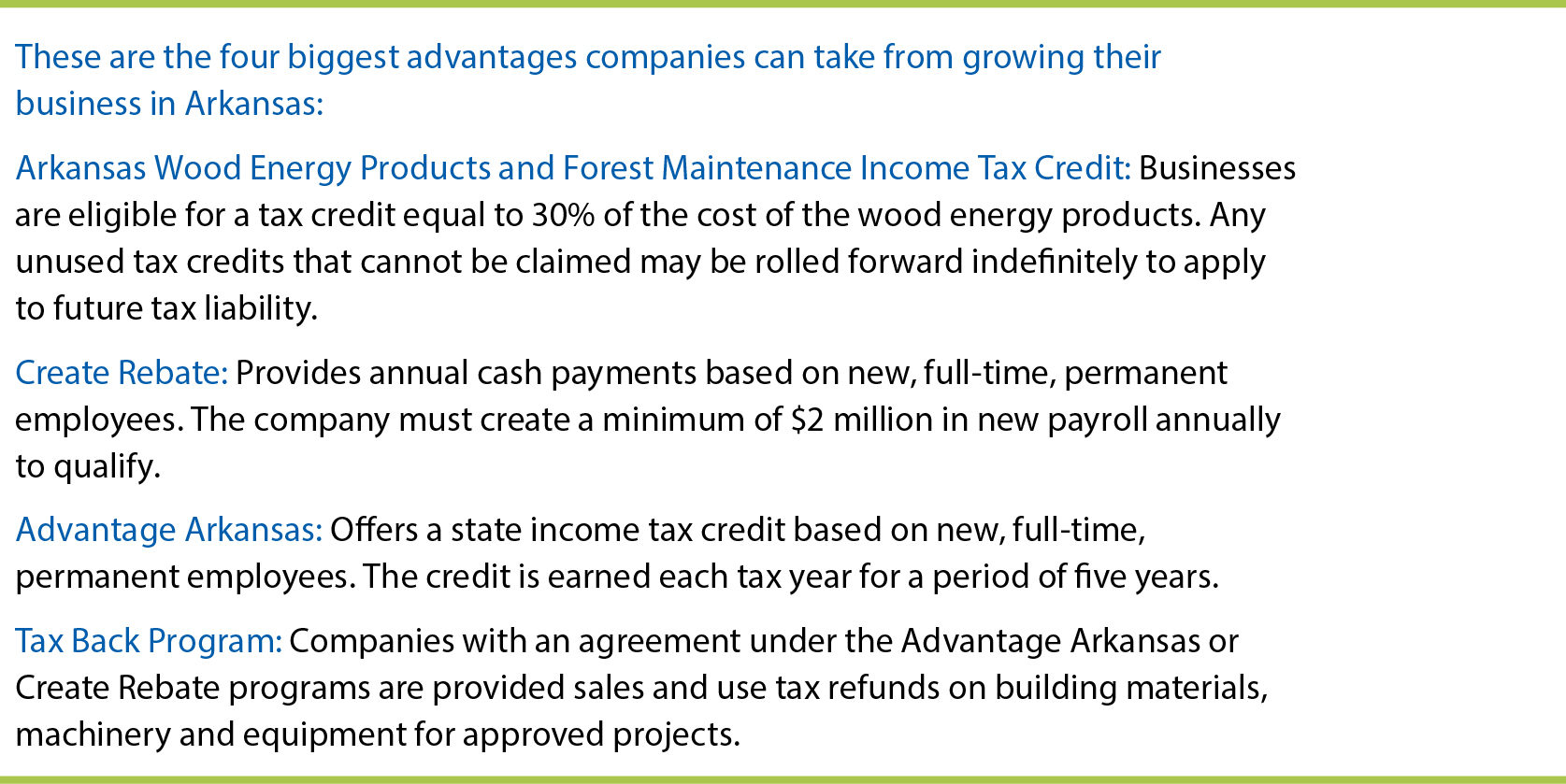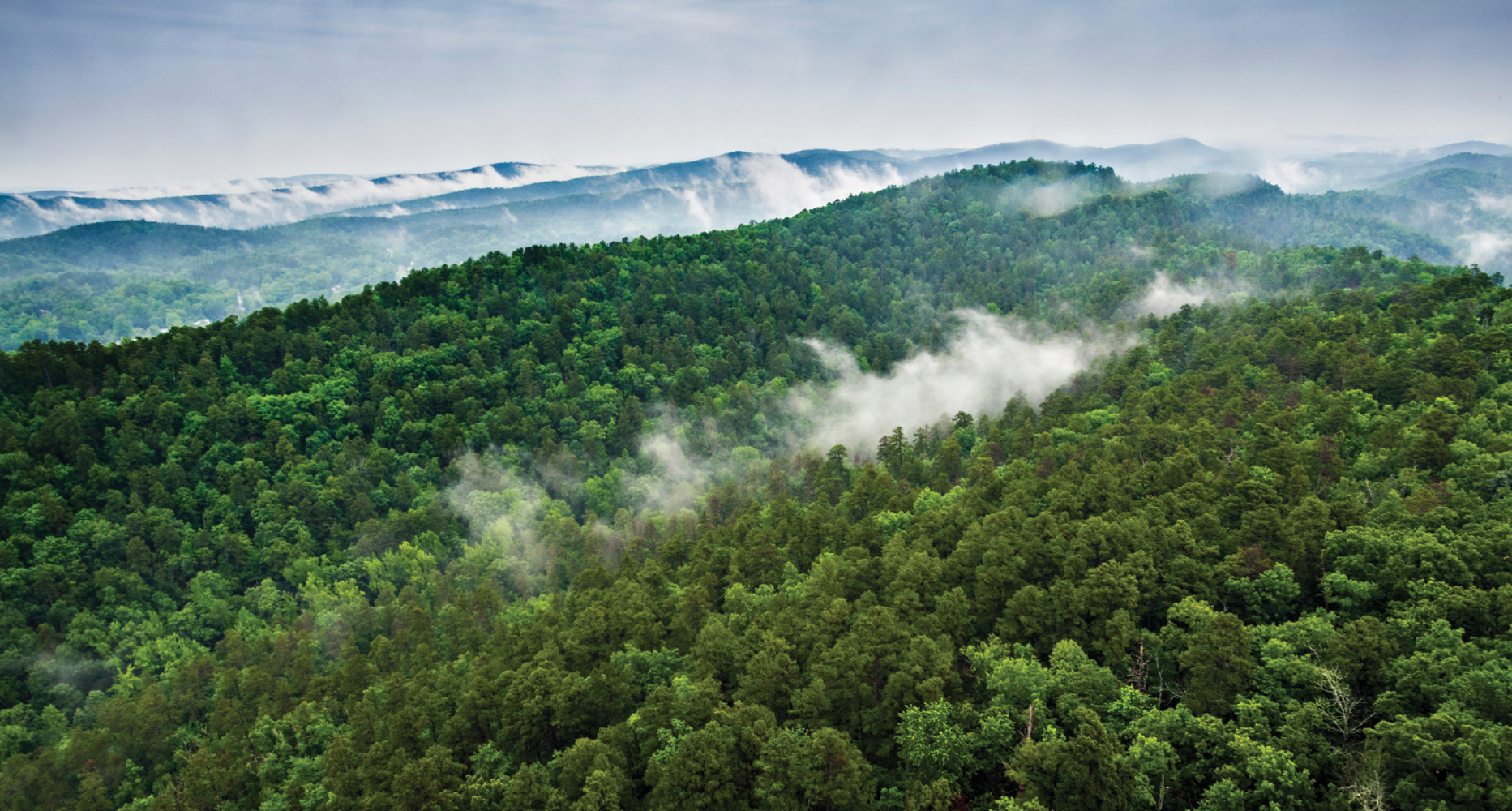Dr. Matthew Pelkki grew up in Michigan, studied in Minnesota, and taught in Kentucky before coming to the University of Arkansas at Monticello over 20 years ago. Pelkki was drawn to forestry because he simply loved trees. Arkansas, with its 56% state forest coverage, was a perfect fit. Some 20 counties alone are more than 75% forest. This is a calling for hikers, campers and foresters like Pelkki, but most importantly, it’s the lifeblood of one of the state’s strongest industry: agriculture.
Dr. Pelkki is a resident Arkansas expert on forestry and a forester himself. He describes timber and forestry products few know exist, such as nano-cellulose technology that’s used for medical devices, or stretchable paper. He’s been all over, but something about Arkansas keeps him here. “I’ve been impressed by the forestry community and the resources of the state and the opportunities that we have,” he said.
Timber and forest products fall under the strength of the agricultural industry and dutifully supplied over $6 billion in total contribution to Arkansas in 2021, accounting for 5% of the state’s GDP and the most of any Southern state. This includes sectors such as paper, furniture and specialty wood products that ride the waves of a rising and falling housing market and new construction. Dr. Pelkki expects this number to rise in the next two years as the market continues to recover from the 2020 dip.
During the initial throes of the pandemic, building operations across the country came to a grinding halt, which hurt the construction industry and created unnatural density in Arkansas forests. Housing starts are the biggest consumer of Arkansas timber, purchasing 60% of all pine lumber. In early 2020 before the pandemic, housing starts were the highest they had been since the 2008 recession but dropped off rapidly in March. With the housing boom in 2021 and 2022, starts are higher now than they were pre-pandemic, particularly in the Northeast. Arkansas has the location benefit of being much closer to the regional uptick in housing starts than its West Coast competitors.

But long before the 2021-2022 housing eruption, timber and forest products had been one of the mainlines of the state economy, due to more than favorable tax programs and a steady stream of trained workers. Not to mention the sustainable approach to production that sees on average 1.7 trees planted and grown for every one harvested. Even amidst the increasing logging, Arkansas’ forest space grows every year.
“A lot of the innovation is coming from European firms but is being readily adopted by Arkansas industry,” said Dr. Pelkki. “Arkansas is a little unique across the South in that we probably have more mature pine saw timber than the other Southern states. … One of the things that differentiates us is that we’re actually growing a higher quality resource than a lot of the Southern states.” Of the timber growing in Arkansas, 60% of the state is hardwood forest and the other 40% is Southern Yellow Pine, which accounts for about 75% of the state’s wood production and is widely regarded as some of the most reliable and versatile wood for builders to use.
The Brain of the Timber Basket
We’ve heard before that incentives and tax breaks can close a deal, but they don’t make it. The backbone of the industry has to be built on something stronger, and for the Natural State one tool at their disposal would be the University of Arkansas at Monticello. The school not only provides a supply of well-trained talent, but it also spearheads best practices and innovation. This is where Dr. Pelkki teaches classes on forest management and economics, as well as wood products, structure and identification.
In spring of 2021, the Arkansas state legislature funded the UAM Center for Forest Business. “This center is going to be staffed with four or five Ph.D.-level technical experts in forest products marketing, policy and global trade, growth and yield modeling, and also timber supply modeling,” said Pelkki. The center has two main goals: first and foremost, advising local companies on questions of timber supply, finding new markets and analyzing policy related to development and production. The second goal is addressing the most sustainable ways for Arkansas to continue to be a national powerhouse in timber supply.
One of these sustainable practices is the intentional thinning of forests. Due to planting efforts and under demand during COVID-19, Arkansas has a massive supply of standing timber Pelkki has dubbed a “wall of wood.” UAM advocates for harvesting trees even when the demand is low, although right now the housing demands exceeds the supply. In the Center for Forestry Business Economic Contributions 2022 Report, the predictions for the state timber and forest products industry are positive, and only enhanced by the center’s local efforts. The report details that seasonal weather and local demands are causing some local markets to show good stumpage price increases, which is good for landowners. Local market information is critical for landowners, and the center provides just that through regional timber supply studies and an ever-extended helping hand.

